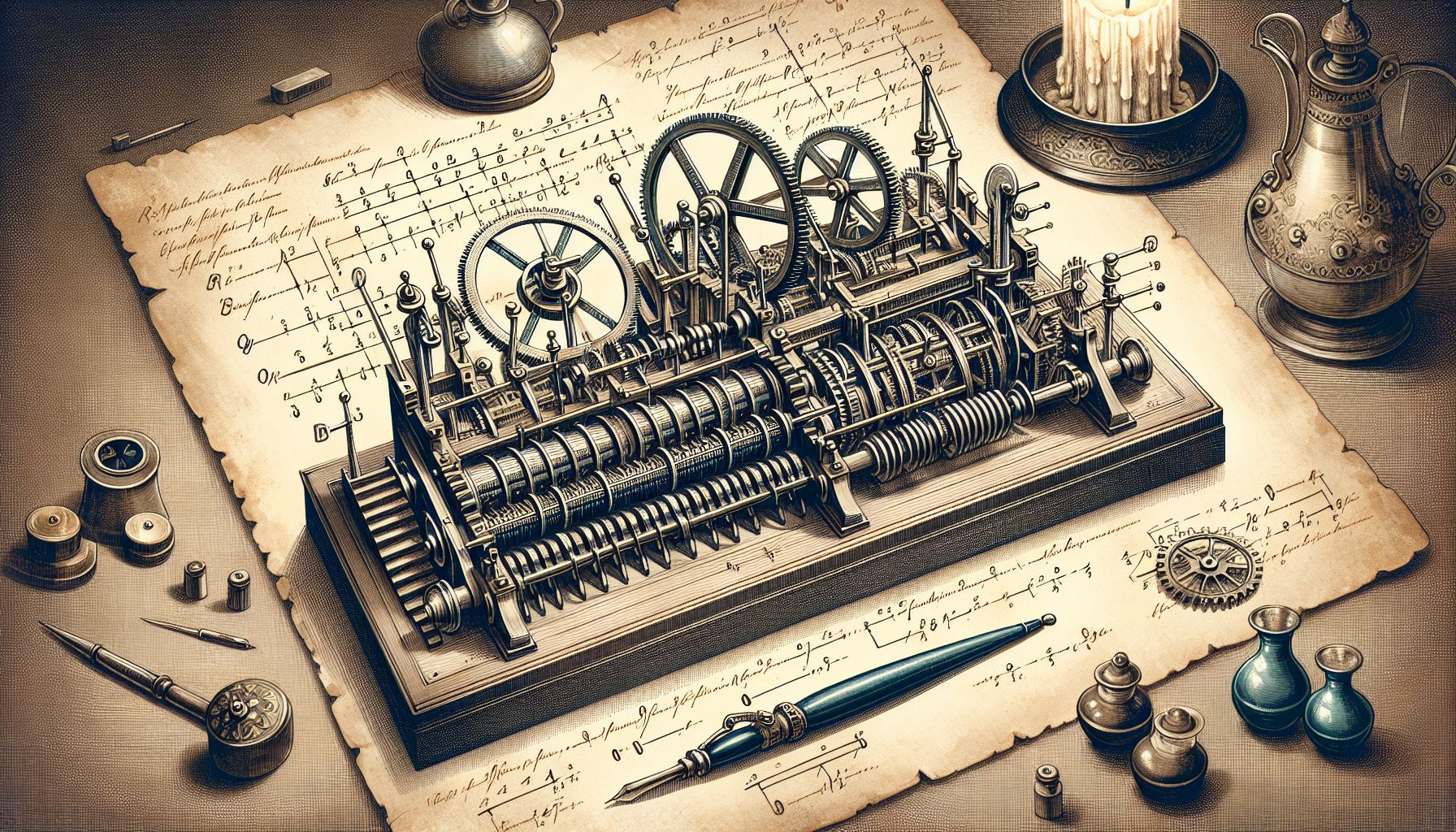📌 Let’s explore the topic in depth and see what insights we can uncover.
⚡ “Before your smartphone, before the computer, even before the abacus, there was the Pascaline. Dive into the riveting world of 17th-century computing with Blaise Pascal’s groundbreaking invention.”
The 17th century was a time of great scientific and mathematical advancement, with individuals such as Galileo, Newton, and Leibniz making significant contributions to their respective fields. Among these beacons of innovation was a man named Blaise Pascal, a French mathematician, physicist, and inventor. Although his accomplishments span diverse areas, this post will focus on one of his most significant inventions - the mechanical calculator, known as the Pascaline. Invented in 1642, the Pascaline was a mechanical marvel of its time, a device that could perform basic arithmetic operations. This blog post will unpack the intricate workings of the Pascaline, exploring its design, functionality, and impact on society. So buckle up and prepare for a journey back to the 17th century, as we delve deep into the world of Blaise Pascal and his remarkable creation. 🚀
📜 The Birth of the Pascaline

"Unraveling the Intricate Gears of Pascal's 1642 Pascaline."
The Pascaline, also known as the Arithmetic Machine, was invented by Blaise Pascal when he was just 19 years old. His initial motivation was to assist his father, a tax collector, in performing the tedious calculations associated with his job. However, the creation of the Pascaline was also driven by Pascal’s fascination with numbers and machinery. Crafted from brass, the Pascaline was a box-like device that utilized a series of gears and wheels to perform addition and subtraction. The machine was composed of a series of dials, each representing a decimal place. As the user turned these dials, the machine would calculate and display the sum or difference. Despite its rudimentary design, the Pascaline was a significant step forward in computing technology.
🛠️ How the Pascaline Worked
To understand how the Pascaline worked, imagine a series of dials on a dashboard, each representing one digit. The dials were arranged in a row, with each dial corresponding to a different place value in a decimal number. So, the first dial represented units, the second tens, the third hundreds, and so on. To perform an addition, the user would use a stylus to turn the appropriate dial the required number of steps. The machine would then automatically carry over any numbers that exceeded 9 to the next dial. This carry mechanism was the true genius of the Pascaline, making it possible to add large numbers with relative ease. Subtraction was a little trickier. The Pascaline performed subtraction by utilizing the principle of nine’s complement arithmetic. In essence, to subtract a number, the user would first need to convert it into its nine’s complement and then add this to the number from which it was to be subtracted. While the Pascaline was not capable of performing direct multiplication and division, these operations could be achieved through repeated addition or subtraction. This made the machine a versatile tool, despite its mechanical simplicity.
🔬 The Impact of the Pascaline
The Pascaline, while not commercially successful in its time, had a profound impact on society and the future of computing. It was the first mechanical device capable of performing arithmetic operations and marked the beginning of an era that would eventually see the creation of modern computers. The Pascaline showcased the possibilities of mechanical computation and sparked the imagination of many who would follow in Pascal’s footsteps. Mathematicians and inventors like Leibniz and Babbage were inspired by Pascal’s invention, leading to the development of more sophisticated calculating machines. Beyond its impact on the field of computing, the Pascaline is also a testament to Pascal’s genius. It exemplifies his ability to combine his mathematical knowledge with his mechanical aptitude to create a device that was far ahead of its time.
📚 Fun Facts about the Pascaline
To add a dash of extra flavor to our exploration of the Pascaline, here are a few fun facts about this incredible invention: Only around 50 Pascalines were ever made, and today, only a handful of these machines survive in museums and private collections. — let’s dive into it. Despite its brilliance, the Pascaline was a commercial failure. This was largely due to its high cost and the complexity of its operation. — let’s dive into it. The Pascaline was not named as such during Pascal’s lifetime. It was only in the 18th century that it was christened ‘Pascaline’ in honor of its creator. — let’s dive into it. Pascal continually refined the design of the Pascaline and created at least five different models, each one an improvement on the last. — let’s dive into it.
🧭 Conclusion
The Pascaline, a 17th-century creation of Blaise Pascal, was a mechanical marvel that set the stage for the computing revolution that would follow centuries later. While it may seem rudimentary by today’s standards, the Pascaline was a testament to Pascal’s genius and a significant advancement in the field of mechanical computation. By utilizing a series of gears and wheels, the Pascaline was able to perform addition and subtraction and, through repeated operations, could even handle multiplication and division. Despite its commercial failure, the Pascaline left an indelible mark on society, inspiring future generations of mathematicians and inventors. As we journey back to our present day, it’s important to remember the humble beginnings of our advanced computing devices. Every smartphone, laptop, and supercomputer owes a bit of their existence to the Pascaline and the genius of Blaise Pascal. So, the next time you pull out your phone to calculate a tip or send an email, take a moment to appreciate the long history of computing and the pioneers like Pascal who made it all possible. And remember, even the most complex innovations can have simple beginnings. 🚀
🌐 Thanks for reading — more tech trends coming soon!
